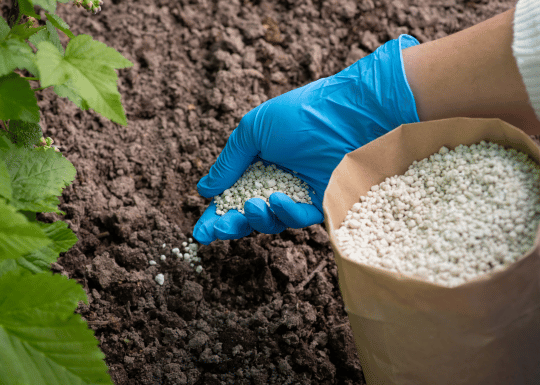A Vital Pillar for Agricultural Growth
The India fertilizer market is witnessing steady and sustained growth due to rising food security concerns, rapid population expansion, and the increasing adoption of modern agricultural practices. As the country remains heavily reliant on agriculture for livelihood and GDP contribution, fertilizers play a crucial role in enhancing crop yield and soil productivity. The market is projected to grow at a CAGR of 4.30% between 2025 and 2034, reaching an estimated value of USD 14.9 billion by 2034. This growth reflects the country’s urgent need to boost food production and improve agricultural efficiency through better nutrient management, according to Expert Market Research. With increasing government support for sustainable farming practices and the growing demand for high-quality fertilizers, the sector is poised for long-term expansion.
Rising Food Demand Fuels Fertilizer Usage
One of the key drivers of the India fertilizer market is the surging demand for food due to a rapidly increasing population. With India expected to become the world’s most populous country, the pressure on agricultural output continues to intensify. Fertilizers are crucial in meeting this demand, as they directly influence crop productivity and food availability. The use of nitrogen-based, phosphate-based, and potash-based fertilizers remains essential in supporting the cultivation of staple crops such as rice, wheat, maize, and pulses.
In addition, the government’s strong emphasis on food security and self-sufficiency is encouraging farmers to use chemical and bio-fertilizers to improve farm productivity. Rising awareness about proper soil nutrient management among farmers is also contributing to higher fertilizer consumption in rural and semi-rural regions.
Government Policies and Subsidy Programs Strengthen Market Backbone
India’s fertilizer market is highly influenced by government support mechanisms, especially through subsidies and pricing regulations. The Indian government continues to subsidize key fertilizers like urea and introduce reforms in the fertilizer subsidy system to ensure timely supply and affordability for farmers. Initiatives such as the Direct Benefit Transfer (DBT) system, the Soil Health Card scheme, and various state-level input support programs have positively impacted the adoption of fertilizers across the country.
Moreover, investments in infrastructure such as warehousing, irrigation, and transport have further strengthened the fertilizer supply chain, making it more accessible in remote areas. These favorable policies and public-private partnerships are expected to maintain fertilizer affordability and availability in the long term.
Click here to get a free sample report along with the table of contents.
Technological Advancements and Smart Agriculture Practices
The adoption of modern agricultural techniques such as precision farming, drip irrigation, and mechanized crop management is driving the demand for advanced fertilizer solutions. Precision farming practices, in particular, rely on accurate nutrient delivery based on soil type, crop need, and climatic conditions. This approach has led to increased interest in customized fertilizers, slow-release fertilizers, and micronutrient-enriched products.
Furthermore, the increasing use of satellite imaging, IoT-enabled sensors, and AI-driven farm analytics is encouraging farmers to shift from traditional farming to tech-integrated solutions. These technologies ensure optimal fertilizer application, reduce wastage, and enhance environmental sustainability.
Growth of Organic and Bio-Fertilizers in India
While chemical fertilizers continue to dominate market share, there is a significant rise in the adoption of organic and bio-fertilizers. Growing awareness of soil health degradation and environmental pollution caused by excessive chemical usage is pushing both farmers and policymakers to explore eco-friendly alternatives. Bio-fertilizers, which contain living microorganisms that enhance soil fertility naturally, are gaining traction across various agricultural belts.
Organic fertilizers such as compost, vermicompost, and green manure are also being promoted under sustainable agriculture missions. Government incentives for organic farming, coupled with increasing demand for organic food, are expected to fuel the market for bio-based fertilizers over the next decade.
Regional Trends and Market Segmentation
The India fertilizer market is geographically diverse, with high usage concentrated in agriculturally intensive states like Uttar Pradesh, Maharashtra, Punjab, Haryana, Andhra Pradesh, and Tamil Nadu. Each region has unique soil types, climate conditions, and cropping patterns, leading to varied demand for specific fertilizer categories.
Nitrogen-based fertilizers (especially urea) dominate consumption in northern India due to wheat and rice cultivation, while phosphate and potash fertilizers see strong uptake in central and southern regions for crops like cotton, sugarcane, and pulses. The market is segmented further by form—granular, liquid, and powder fertilizers—with granular fertilizers seeing the highest demand due to their ease of use and shelf stability.
Competitive Landscape and Key Market Players
India’s fertilizer market features a mix of public sector undertakings, cooperative societies, and private companies, creating a competitive and dynamic environment. Key players include Indian Farmers Fertiliser Cooperative Limited (IFFCO), National Fertilizers Limited (NFL), Gujarat State Fertilizers & Chemicals (GSFC), Coromandel International, and Rashtriya Chemicals and Fertilizers (RCF).
These companies are focusing on expanding production capacity, improving distribution networks, and launching value-added products tailored to specific crops and regions. Strategic collaborations and R&D investments in developing sustainable and precision-based fertilizer solutions are also becoming key growth strategies.
Sustainability and the Future of the Fertilizer Sector
As India’s agriculture sector moves toward sustainable practices, the fertilizer industry must balance productivity with environmental responsibility. There is growing concern over soil degradation, groundwater contamination, and greenhouse gas emissions caused by over-fertilization. Hence, eco-efficient nutrient solutions, precision application, and farmer education programs will be essential for long-term growth.
Additionally, India’s commitment to reducing its carbon footprint and achieving food security goals under various climate agreements will drive the adoption of low-impact and climate-smart fertilizers.
Strong Prospects Backed by Innovation and Policy Support
The India fertilizer market is set for a robust expansion, backed by growing food demand, technological progress, and supportive government policies. As the country strives for agricultural resilience, the role of fertilizers—both chemical and organic—will be pivotal. Companies that innovate, embrace sustainable models, and align with digital agriculture trends will emerge as market leaders in the coming decade.
Media Contact:
Company Name: Claight Corporation
Email: sales@expertmarketresearch.com
Toll Free Number: +1-415-325-5166 | +44-702-402-5790
Address: 30 North Gould Street, Sheridan, WY 82801, USA
Website: https://www.expertmarketresearch.com
 :
https://in.pinterest.com/saurabhbadoni26/
:
https://in.pinterest.com/saurabhbadoni26/

